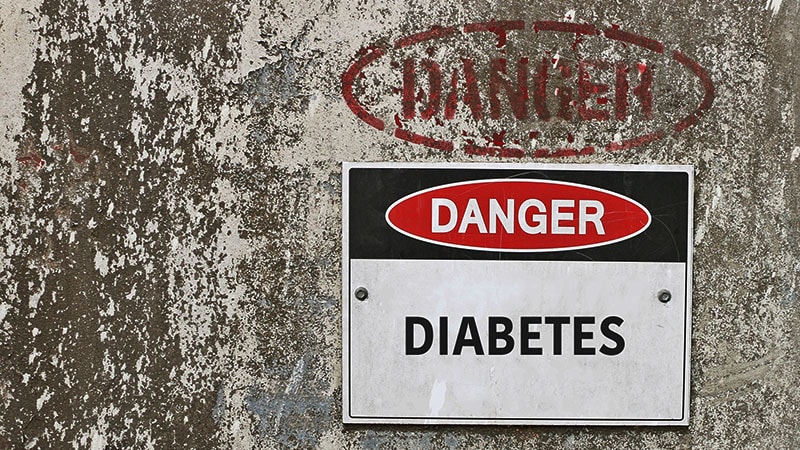New Guidelines for Hyperglycemia Emergencies in Adults with Diabetes
Core Concepts
De-emphasizing glucose in DKA diagnosis, new guidelines aim to improve outcomes for hyperglycemic emergencies in adults with diabetes.
Abstract
The upcoming joint society statement on hyperglycemic emergencies in adults with diabetes will introduce significant updates to the diagnostic criteria for diabetic ketoacidosis (DKA) and hyperosmolar hyperglycemic state (HHS). The new guidelines emphasize the risks associated with the hybrid presentation of these conditions, urge clinicians to investigate precipitating causes, and provide detailed recommendations for diagnosis and management. Key changes include revised definitions for DKA and HHS, emphasizing beta-hydroxybutyrate testing, and updated criteria for resolution and acute management. The guidelines also focus on mitigating complications, preventing recurrence, and addressing social determinants of health to improve patient outcomes.
Structure:
Introduction to New Guidelines
Focus on Hybrid Presentation of Hyperglycemic Emergencies
Revised Definitions for DKA and HHS
Acute Management Recommendations
Mitigating Complications and Preventing Recurrence
Addressing Social Determinants of Health
New Hyperglycemia Emergency Guidance Updates DKA Definition
Stats
The hyperglycemia cutoff for DKA is now lowered to 200 mg/dL from the previous 250 mg/dL.
Approximately 10% of DKA cases occur with euglycemia or near-normoglycemia.
The new guidelines recommend a beta-hydroxybutyrate cutoff of ≥ 3.0 mmol/L for assessing ketosis in DKA.
Metabolic acidosis is defined as a pH < 7.3 and/or a bicarbonate concentration < 18 mmol/L.
Criteria for resolution of DKA include a venous pH of ≥ 7.3, bicarbonate > 18 mmol/L, ketones < 0.6 mmol/L, and glucose ideally < 200 mg/dL.
Quotes
"I liked the proposal to eliminate the anion gap in decision-making and to focus on measurement of blood ketones, principally beta-hydroxybutyrate, in the diagnosis of DKA and monitoring the effect of treatment." - Charles Alexander, MD
"If someone is on an SGLT2 inhibitor, there is no need to look at blood glucose levels, which may be normal or near normal in the setting of DKA." - Charles Alexander, MD
Key Insights Distilled From
by Miriam E. Tu... at www.medscape.com 10-09-2023
https://www.medscape.com/viewarticle/997186
Deeper Inquiries
How can healthcare systems better address the social determinants of health to prevent recurrent hyperglycemic emergencies?
To better address the social determinants of health and prevent recurrent hyperglycemic emergencies, healthcare systems need to adopt a holistic approach that goes beyond traditional medical interventions. This includes implementing comprehensive screening tools to identify patients at risk due to social factors such as financial constraints, mental health issues, and lack of access to resources. Healthcare providers should collaborate with social workers, community organizations, and other support services to address these underlying issues. Providing education on self-management, including problem-solving skills, sick day rules, and proper medication adherence, is crucial. Additionally, offering structured education programs that cover injection techniques, insulin dosing, continuous glucose monitoring (CGM), and home ketone testing can empower patients to better manage their condition and prevent emergencies.
What challenges might arise from eliminating glucose levels entirely as part of the DKA/HHS definition for people without diabetes?
Eliminating glucose levels entirely as part of the DKA/HHS definition for people without diabetes may pose several challenges. One significant challenge is the potential confusion among healthcare providers who have been trained to associate high blood glucose levels with diabetic emergencies. This shift in diagnostic criteria may require extensive re-education and training to ensure that healthcare professionals accurately identify and manage hyperglycemic emergencies in individuals without a history of diabetes. Additionally, the absence of glucose levels in the diagnostic criteria could lead to delays in diagnosis and treatment, especially in cases where other symptoms are not immediately recognized as indicators of DKA or HHS. Furthermore, the lack of glucose levels as a reference point may complicate the monitoring and management of these conditions, potentially impacting patient outcomes.
How can the medical community improve early screening and prevention strategies for hyperglycemic crises beyond the current guidelines?
To enhance early screening and prevention strategies for hyperglycemic crises beyond the current guidelines, the medical community should focus on proactive measures that address both clinical and non-clinical factors. Implementing routine screening protocols for high-risk populations, such as individuals on SGLT2 inhibitors or those with a history of recurrent hyperglycemic emergencies, can help identify cases earlier. Utilizing advanced diagnostic tools like beta-hydroxybutyrate testing and serum ketone measurements can improve the accuracy of diagnosis and enable timely intervention. Moreover, promoting patient education on recognizing early warning signs, self-monitoring techniques, and preventive measures can empower individuals to take control of their health. Collaborating with multidisciplinary teams, including social workers, mental health professionals, and community resources, can provide comprehensive support to address underlying issues contributing to hyperglycemic emergencies. By integrating these strategies into clinical practice and promoting a patient-centered approach, the medical community can enhance early detection and prevention of hyperglycemic crises.
0
